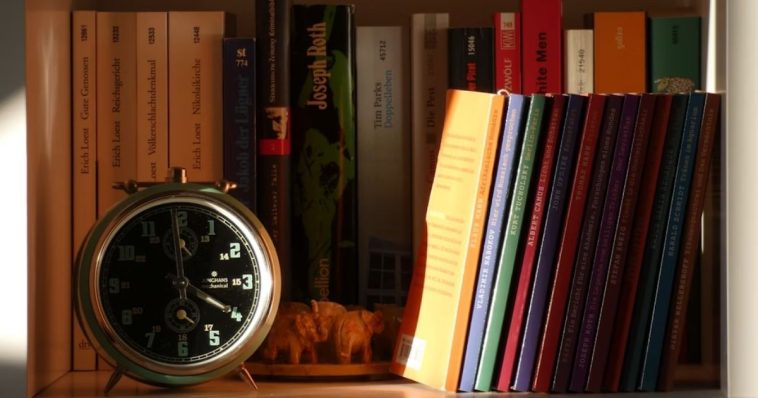In the surreal world of time-loop stories, memory is both a burden and a blessing. And when memory clashes with an unchanging reality, journals become survival tools. For the looping character, each notebook is a breadcrumb trail through the fog—tracking relationships, alternate outcomes, emotional states, and subtle changes that might hint at a way out.
But here’s the twist: time-loop journals often become more than strategy logs. Over time (pun intended), they evolve into deeply personal memoirs. What starts as a clinical record of events becomes a layered portrait of someone unraveling and reassembling themselves—again and again. The character begins to notice the small moments: a barista’s smile on Day 3, the way a stranger hums a familiar tune on Thursday, and how one compliment can shift an entire outcome. The journals become mirrors, helping them rediscover meaning in a week that shouldn’t matter.
A Tool for Reinvention
Time-loop journaling reframes personal growth through the surreal lens of repetition. While reality allows only one chance to act, time loops offer countless iterations. The journal, immune to resets, becomes a thread connecting fragmented days—a record of choices not made, feelings expressed too late, or withheld entirely. More than a diary, it is an experiment in emotional decision-making, accumulating every misstep and insight across alternate outcomes.
In stories, these journals often serve dual roles as reflection and revelation. They chart psychological shifts while offering clues to a more profound mystery, suggesting the loop is less of a malfunction and more of a lesson. Over time, survival logs evolve into philosophical treatises, tracing themes of compassion, control, and the inevitability of regret. While the external world remains unchanged, the journal captures a transformation within, evidence that self-discovery persists even in suspended time.
Why the Loop Captivates
Time loops possess a strange, compelling charm—often presented in science fiction but rooted in a timeless longing to pause, reflect, and start anew. Beneath the surface, they echo a more profound craving for second chances. Within these narratives, the journal becomes more than just a chronicle; it serves as both a guide and a reflection, revealing how even the smallest changes can alter the course of events entirely.
The loop offers a sandbox of infinite possibilities, stripping consequences of their finality and turning repetition into revelation. Each reset rewrites the rules, allowing choices untethered from permanence. Within this framework, the journal evolves—no longer a static notebook, but a living archive of trial, error, humor, grief, and growth. While the world repeats itself in predictable cycles, the written word continues forward, a quiet testament to the truth that transformation can exist even when time refuses to move.
Time-Loop Journalsxz
As the same week repeats again and again, the journal evolves from a simple record into a roadmap—charting progress, patterns, and the possibilities hidden in repetition. Each entry marks a different decision, a different path taken, and a new lesson learned. Over time, these notebooks stack up like alternate realities on paper. Some are full of chaos and regret. Others read like near-perfection. In every version, something changes—sometimes subtly, sometimes drastically. What begins as confusion slowly transforms into intent. The journal evolves into a tool, not just for tracking time, but also for shaping it.
But here’s where it gets interesting: memory becomes unreliable. The character begins to get confused about what happened and what was supposed to happen. Past and future start to blur across ink-stained pages. Was the café explosion in Week 19 real or imagined? Did they fall in love in Week 7 or write about it that way? The journal doesn’t just reflect reality—it starts to override it. Each revision becomes a spell, a soft rewrite of existence. And with enough iterations, the character begins asking: What if this isn’t a loop at all—but a rewriting session with the universe as the editor?
When the Pages Begin to Talk Back
At first, the journals are grounded. They help the character track variations in conversations, outcomes of choices, and growing emotional insights. But after hundreds of loops, something shifts. The notebooks begin behaving like mirrors with their minds—reflecting not just what was written, but what could be, or what should have been. One day, a journal entry appears in unfamiliar handwriting. The voice is similar but not quite theirs—like an echo warped by time. It references events the character has not yet lived through. Then it happens again. And again.
The lines between author and observer start to blur. Are these future selves reaching out? Are these journals now shared territory between timelines? The character begins, reflecting not just what was written, but what could be, or to treat the books less like diaries and more like sacred texts—reading between the lines, seeking patterns, questioning every smudge or margin note. One entry suggests avoiding a street on Thursday. Another sketch shows a shattered mirror, and days later, that mirror breaks exactly as drawn.
As paranoia sets in, the notebooks evolve into something mythic. One smells faintly of smoke and ink, even though it has never been near a fire. Another seems to rewrite itself overnight, pages vanishing as soon as they’re read. The most disturbing one contains only a series of crude sketches—a door, a hallway, a key with teeth like a skyline—and then, weeks later, the door appears in real life.
The Loop Isn’t the Punishment. Forgetting Is.
Eventually, the character realizes the loop isn’t the cruel part—it’s the forgetting that devastates. Writing becomes their anchor, their protest, their way of clawing meaning out of the repetition. Pages pile up like bricks in a fortress built against oblivion. Journals are hidden in floorboards, buried in gardens, tucked behind library shelves—anything to keep them safe through the reset.
Then one day, it all vanishes.
They wake up in the loop, but this time there are no breadcrumbs. No scribbled clues. No warnings or insights. Just an eerie blankness. The world feels familiar but hollow, like a house where all the furniture has been removed. Names hover just out of reach. They recognize street corners but not why they matter. There’s a phantom ache for friends they can’t remember losing.
Without memory, the loop becomes a labyrinth. They stumble, repeat mistakes, chase shadows of things they once knew. It’s not just frustrating—it’s identity erosion. It’s the terror of being alive without proof. Without context. The punishment isn’t being stuck; it’s losing the pieces of yourself that made the loop bearable. It’s realizing that even your pain was once a form of progress—and now even that’s gone.
The Art of Rewriting Yourself
When time loops, progress no longer follows a straight line. Ladders vanish, finish lines blur, and days stretch in all directions. Within that temporal suspension, creative energy finds unexpected space to emerge.
The journal becomes an archive of subtle revolutions. Notations shift from escape plans to quiet evaluations of being. Moments are weighed—grace in confrontation, laughter exchanged, truths spoken, silences held. Each entry captures a version shaped by different choices: one more patient, another more bitter; one drawn to nihilism, another reverent of something as simple as a well-made coffee.
Each day acts like a rough draft—stripped of noise, revealing what truly lingers in stillness. The loop doesn’t hand out solutions; it simply reflects. As time stretches on, the rush to escape softens. The need for a finale fades. What takes its place is a quiet truth: if the cycle persists, the most meaningful goal is to grow into someone who’s not only tolerable—but possibly even worth becoming.
When the Loop Breaks
Time-loop narratives often revolve around a core enigma: What breaks the cycle? Yet a more profound question lingers beneath—perhaps escape was never the point. The loop transforms from confinement into a crucible, shaping change through relentless repetition. There’s no hidden code or external trigger that sets things right; it’s the quiet shift within. The loop ends not with a solution, but with self-evolution—when the individual becomes someone who no longer needs the loop at all. Ultimately, growth supersedes escape as the ultimate resolution.
In that sense, the journal is more than a record—it’s a cit’sss. The earliest entries often pulse with urgency, anxiety, and the illusion that everything can be controlled if just the right combination is found. However, as time passes, those entries shift. Reflection takes the place of panic. Patterns reveal themselves. Over time, there’s singing to outcomes and more clarity about values, intentions, and meaning. The journal begins to chart not just actions, but emotional movement—a breadcrumb trail through infinite sameness, quietly marking the journey from resistance to release.
When Expression Has Done Its Work
Eventually, even the most stable loops reach a point of rupture or transformation. Whether through intention or fatigue, the journaling ceases—not from a lack of insight, but because expression has fulfilled its function. The cycle was never a tool for domination; it served as a lens for clarity and understanding. No single iteration achieves perfection, yet each reveals a distinct form of truth.
The door sketched into the margins may become real. Perhaps the explosion at the café will unfold and pass, survivable after all. Maybe love doesn’t follow a schedule, but instead unfolds in an undefined future that stretches beyond counting. Perhaps the ending comes quietly—not with fanfare, but with a morning that unfolds like any other, no longer caught in the rhythm of return.



